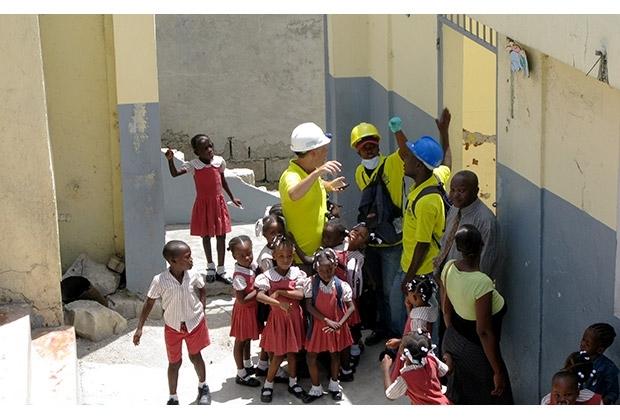Then:
As our cover boy in January 2006, Kit Miyamoto discussed the “Miyamoto Way” of doing architectural engineering. Engineering, he said, is logic. It’s black and white. However, he added that logic can be applied creatively in many development disciplines.
“It’s an interesting dichotomy,” said the then 42-year-old president and CEO of Miyamoto International Inc. “On one hand, you have to be creative and offer your own performance-based solutions to a specific situation. On the other hand, those creative solutions have to be based on sound engineering principles: logic and physics.”
As reported in 2006, Miyamoto International is a structural and earthquake engineering firm with a portfolio that includes Fortune 1000 companies from around the world. At that time, the company was involved with more than 50 high-rise projects (including the since- failed Saca Towers project on Capitol Mall), each with 50 or more floors.
Miyamoto noted that back in the ‘80s, the firm had made a major move into the structural and earthquake engineering sector with the goal of becoming the best in the discipline.
“As of today we have done more than 80 percent of the seismic earthquake retrofits that have been completed on old buildings in the Sacramento area,” he said.
With a business plan built on seismic retrofit expertise, Miyamoto had begun to further position the firm to take advantage of what was expected to be an explosion in the market of high-rise construction. Three years earlier, the company had purchased the Los Angeles engineering firm Martin & Huang. This acquisition, according to Miyamoto, immediately gave the company high-rise expertise.
“By adding this group of professional specialists to our team, we also absorbed another very large and loyal client base.”
Now:
Today, Miyamoto International has projects underway in 75 countries, has 15 offices worldwide and is expecting to open three more locations within the next six months.
“We tripled our revenue during the great recession,” Miyamoto reports.
While the portfolio of businesses the company serves includes a global mixture of aviation, civic, commercial, energy, healthcare, high rise, infrastructure and marine projects, Miyamoto and his company have gained international renown for their expertise on the natural disaster front. In the past six years alone the company has done extensive studies and work in Port Au Prince, Haiti; Sichuan, China and throughout Japan.
Two days before the March 2011 8.9 magnitude earthquake and subsequent massive tsunami that devastated Japan, he was in Tokyo making a “designing for disaster” presentation to a group of government officials.
“I was still in Tokyo the day of the earthquake. I felt the big jolt while driving in downtown Tokyo,” he says. (He also instantly became a “johnny-on-the-spot” news reporter for several Sacramento area media outlets). On behalf of the government, Miyamoto took on the task of collecting site and field data needed for developing an engineering plan for reconstruction response.
Miyamoto employees in Haiti in 2010. A total of 400,000
structures were assessed and over 10,000 were repaired.

Following the 2008 earthquake near the Chinese province of Sichuan, the company provided quality control and risk mitigation studies funded by the World Bank. And in its largest post-disaster endeavor to date, Miyamoto International remains deeply involved in the repair effort in Port Au Prince (following the 2010 earthquake). The company played a key role in the Haiti Relief Fund effort, raising more than $300,000 from California alone.
“I was inspired by the participation in this relief effort from our staff, clients and society as a whole,” he says. “We all believe in our company’s mission: To make the world a better place.”



